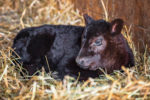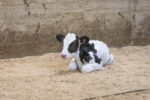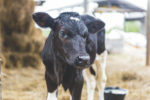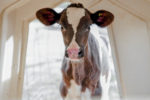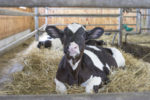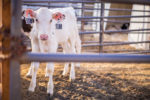Calf & Heifer Health
Healthier, more productive replacement heifers begin in the calf barn. Since many farms do not need to raise every heifer, using genomic testing can help farms identify the calves with the most potential.
Read More
Extended colostrum and transition milk feeding: Pros, cons and implementation
While the initial colostrum feeding is still essential, feeding colostrum or transition milk for multiple days can help protect calves during their most vulnerable stage, resulting in fewer sick calves and better development.
Read More
5 steps to aid in dairy-beef crossbred growth and performance
Proper calf care and nutrition in the pre-weaning phase are the foundation for a successful dairy-beef crossbred program.
Read More
Setting calves up for a long-term, successful immune system
Setting up a calf’s immune system from the beginning impacts both her short-term and long-term health. This includes vaccinating dry cows, ensuring passive transfer and developing vaccination and immunostimulant protocols that align with the farm’s heifer-raising goals.
Read More
Leave the needle in the haystack: Rehydrate with an oral electrolyte
Scours causes 60% of pre-weaned calf deaths. Knowing how to correctly rehydrate a dehydrated calf and which product is necessary in each situation is essential to minimizing calf mortality.
Read More
Calf gut health and IgY antibodies
While IgGs might be the star of the show in colostrum, supplementing with IgYs could aid in lining the gut, adding an extra layer of defense through the first weeks of a calf’s life.
Read More
Supporting a dairy calf’s microbiome for a strong immune system
Early life management affects a calf’s health and productivity, not only short-term but throughout its entire life. To help ensure success, farms should focus on nutrition, microbiome, immunity and gut integrity.
Read More
Getting calves to drink water is a yearlong pursuit
A calf’s body is 70% water, and water intake is closely tied to rumen development and starter intake. To encourage intake, producers should provide clean water frequently. Providing warm water or water with electrolytes in a bottle may also encourage additional intake.
Read More
Protect calves with a solid BRD identification plan
Learning how to properly identify symptoms of BRD, performing routine checks during feeding, keeping detailed records, and monitoring the type and duration of antibiotic therapy can aid in the protection of youngstock from BRD.
Read More


